Globalization has brought many changes in developing nations, such as India. We now have an improved lifestyle and living standards. The introduction of big food chains has brought international cuisines to our dinner tables. It has also resulted in a changed food preference, especially among the younger generation. The primary ingredient in most of these cuisines is exotic vegetables such as broccoli, purple broccoli, asparagus, baby corn, cherry tomato, rosemary, thyme, red cabbage, colored capsicum, etc.
There has been a gradual increase in the demand for the imported varieties of exotic vegetables, which have been growing every year. The low production volumes in India add to the rise in imports. In this article, you will get detailed information about the list of exotic vegetables.
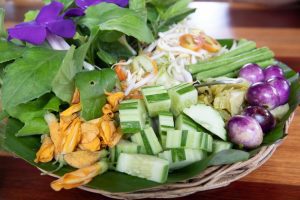
However, growing exotic vegetables needs a lot of care due to high susceptibility towards pests and diseases. Since these are high-value crops, they are grown in a protected environment. The whole supply from the farm to the table has to be in a manner that produces minimum wastage and maintains the quality of these products.
Large investments can help develop the infrastructure and technology, from importing seeds to developing post-harvest infrastructure like cold chain facilities.
The import of exotic vegetables is still at a nascent stage in India compared to other countries. This is due to the challenge of huge investments, non-availability of seeds, high perishability, premium pricing, and lower scale acceptance from the consumer side needs that need to be catered to improve the growth rate.
If these challenges are addressed, India’s potential for enhancing the import of foreign vegetables will increase further.
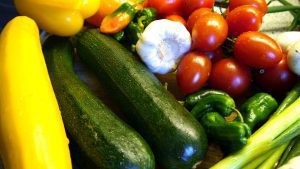
Vegetables help us to be fit and healthy due to the abundance of proteins, vitamins, and other essential nutrients found in them. Surveys show that almost 42% of India’s population consists of vegetarians. Indians always love to have at least 1-2 types of vegetables along with their meals.
History shows how many exotic vegetables have become an integral part of our cuisine and are now more popular than some local vegetables. For example, capsicum has become a part of our everyday diet, and we use it in almost every curry that we cook. Vegetables that were introduced in the last few decades are referred to as exotic vegetables in India.
Related Reading:
This rainy season, don’t forget to add these monsoon veggies to your diet.
Table of Contents
Exotic Vegetable Demand
High-end retail chains like Q-mart mainly use these commodities, Naturs Basket, Godrej Fresh, online segments like Trikaya online, Nature’S Basket online, during supermarket shopping, in 5-star hotels, quick-service restaurants like McDonald’s, Subway, continental and fine dining restaurants like Italian, Chinese, Japanese, Mexican, Mediterranean, South Asian cuisines, and catering services in institutional and corporate offices, hospitals, air catering, social functions and festivals like parties and weddings.
The demand for these exotic vegetables is due to the rapidly growing organized foodservice sector, its premium nature, higher consumer demand through increased awareness, and innovation in the supply chain, including the flourishing of modern retail and commerce, delivery platforms, and digital payments. The increase in demand for these exotic vegetables in India is primarily because of their use in international cuisines.
At the same time, another growing segment of health-conscious people includes these vegetables in their diet plans as raw salads, diet salads, smoothies, stir-fried vegetables, etc.
Most Famous Exotic Vegetables
While some foreign vegetables have become household names in India, some are still gaining popularity. Exotic vegetables are costly since they have to be cultivated in poly houses or green shade net houses. The demand for these vegetables in India has increased, with globalization playing a key role. It is mostly preferred by the youth these days.
Here’s a list of Exotic Veggies:
1. Cherry tomatoes

These are small and round. These are called cherry tomatoes since they are the size of cherries. These tomatoes, although small in size, taste the same as normal tomatoes. They are used in a variety of dishes such as salads and curries and can be eaten raw too. These are quite expensive and are mostly available at supermarkets.
They can also be purchased from online shopping sites such as Naturs Basket, Godrej Fresh, etc. they are believed to be an intermediate genetic admixture between the current tomatoes and those cultivated as garden tomatoes. Cheery tomatoes are experimented a lot, even transforming them into canned tomatoes.
Some popular dishes that use cherry tomatoes are creamy tomato spaghetti, creamy cherry tomatoes and olives, herbal macaroni salad, mozzarella cheese cherry tomatoes and basil hot dog roll, pineapple cucumber salad, samosa kadhai chaat, and many more. This is one of the most popular vegetables on the list of exotic vegetables.
2. Zucchini

Zucchini is a summer squash in the Cucurbitaceae plant family and falls in the same category as cucumbers, melons, and spaghetti squash. This extremely healthy vegetable is a source of iron, calcium, zinc, and several vitamins.
Cooked zucchini especially contains a high amount of vitamin A compared to raw zucchini, which contains slightly fewer vitamins. They have health benefits such as helping reduce blood sugar levels, aid in healthy digestion, improve heart health, and strengthen vision.
Zucchinis are a part of the exotic vegetables list and are green or yellow. They can be eaten raw in salads, as a stew with other fruits and vegetables, baked with rice, lentils, and vegetables, stir-fried with olive oil, soups, bread spaghetti.
3. Baby corn

This exotic vegetable occupies a very important place in the list of exotic vegetables due to its high popularity. This low-calorie food is used in a plethora of dishes.
Along with used in Italian and Chinese dishes, baby corn is also the solo star of various starters like baby corn fritters and chili baby corn, it can also be teamed up with other ingredients in a salad, stir-fry, pizza, roll or wrap such as double layered cheese veggie crunch pizza and cheesy vegetable dices.
It is a very common ingredient in many Chinese dishes, such as Schezwan fried rice, starters, gravies, and Manchurians.
4. Celery
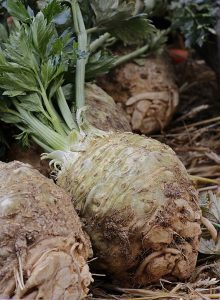
Celery is one of the most expensive vegetables in the list of exotic vegetables. It is a salad green that has a range of health benefits. It prevents inflammation and cancer, regulates blood pressure, and controls liver diseases, gout, asthma, psoriasis, and fever. It can be eaten both raw as well as cooked.
Two-thirds of its production in India is exported due to its less demand in the country. It is often costly since it has to be exported from other countries. Celery is used in various kinds of soups and salads.
5. Lettuce
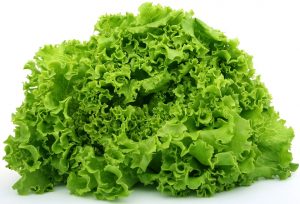
It is hard to imagine having a salad without lettuce in it or biting on a burger without a crunch of lettuce to add to the texture. This crisp and crunchy green leafy vegetable is one of the most common and widely used vegetables among the list of exotic vegetables.
Whether you stack them in your sandwiches and burgers or use them as a wrap to scoop up spicy or cheesy fillings, it doesn’t fail to surprise with its versatility. It is also a perfect party snack for all health-conscious people and tastes best with a variety of dips.
Some of the best lettuce recipes are Caesar’s salad, baby lettuce, citrus fruits, and feta salad, crackling duck and lettuce rolls, guilt-free chicken tacos, Vietnamese cold spring rolls, spicy chicken lettuce wrap, and many more.
6. Asparagus
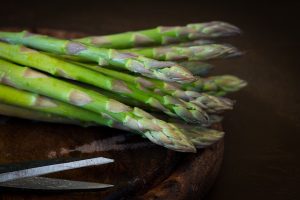
This tops the list of exotic vegetables due to their health benefits. Asparagus is low in calories, neutralized stomach acids and packed with essential vitamins, minerals, and antioxidants. It comes in a variety of colors, including green, white, and purple. It is popularly used in dishes worldwide, including frittatas, pasta, salads, and stir-fries.
While buying asparagus, look for firm stems and tight, closed tips. This is one of the imported vegetables in India.
7. Parsley
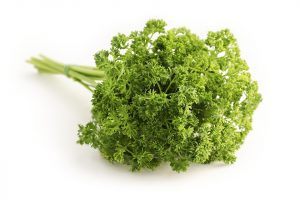
Parsley is one of the most versatile herbs used in Middle Eastern cooking and is popularly used as a spice. It is also used as a garnish on several dishes. Parsley is one of the foreign vegetables that is used as a garnish and sprinkled in soups, hummus, or mixed with ground meat.
Dried parsley leaves, when crushed, have a strong aroma and a pungent, bitter taste. It has a long shelf life and can also be used in delicacies like pasta, pizza, salad, etc.
8. Broccoli
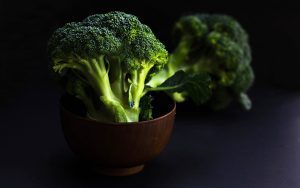
Broccoli is again one of India’s most common international vegetables that has made a permanent place in our cuisine. Although a foreign vegetable, it is now cultivated in India as well. Broccoli belongs to the cabbage family and received its name from the Italian word ‘broccolo’, meaning the flowering top of the cabbage plant.
Broccoli is one of the most nutritious vegetables in the list of exotic vegetables and is rather exotic with dark green, crisp, and sturdy florets. You will be surprised to know that it ranks as the world’s fifth-most famous vegetable. Some of the popular broccoli dishes are baked broccoli, broccoli salad with French dressing, buttermilk chicken with char-grilled broccoli, chatpati broccoli, broccoli and cheddar crepes, broccoli soup, broccoli pasta, salmon with broccoli, roasted bell pepper with broccoli salad, broccoli soup with wasabi, broccoli, baby corn, and colorful pasta salad, and many more.
There is no broccoli Indian name since it is a foreign vegetable.
9. Chinese cabbage
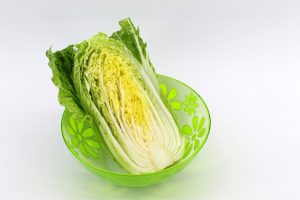
This vegetable has a sure shot place in the list of exotic vegetables, which is largely used in Chinese cuisine, is closely related to turnip, although it looks like a cabbage. It has pale, tightly wrapped, succulent leaves with crisp, broad, white ribs and a delicate, mild, sweet flavor.
Chinese cabbage is of two types: firm-headed and loose-headed. The firm-headed group is further divided into the short, barrel-shaped variety and the taller cylindrical cabbages. It has many health benefits.
It contains several vitamins, such as vitamin B, C, and K, folic acid, antioxidants, and dietary fibers. It can also protect the body from cancers and lower LDL levels. It can be used raw in salads, stews, and soups or steamed and added to stir-fries.
10. Red cabbage
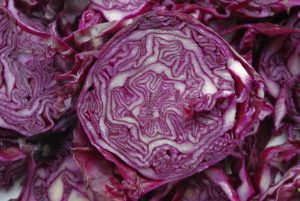
This vegetable falls in the list of exotic vegetables since it is imported from other countries. It belongs to the Brassica genus of plants. Although it tastes similar to green cabbage, it is richer in beneficial plant compounds that have been linked to health benefits such as stronger bones and a healthier heart.
It lowers inflammation and protects against various kinds of cancers. It is an incredibly versatile vegetable that can be eaten raw, cooked, or fermented and added to a variety of dishes. It can be steamed and used to make dumplings and momo fillings or braise with red wine, vinegar, apples, carrots, and beets.
It can also be roasted or sauteed with meat and beans or can be shredded and used as a nutrient-rich garnish for soups, salads, and warm dishes.
11. Pak-Choy
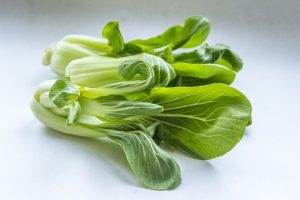
This is again a variety of Chinese cabbage and is commonly used in stir-fry and spring rolls. Originally from China, it has become popular in European food and is now imported to India. Its structure looks like squat celery with white or very pale green, short, or chunky stalks and glossy deep green leaves.
If the leaves are young, they can be eaten raw but taste best when cooked mildly. It has several health benefits and is rich in vitamin C, magnesium, beta carotene, folic acid, calcium, and many essential minerals. It is a vegetable found on the list of exotic vegetables.
12. Colored capsicum

Colored capsicum is a favorite among kids due to its bright and varied colors. They are available in yellow, red, and green colors and is another common and widely used vegetable in the list of exotic vegetables.
Capsicums are rich in vitamins, help in the formation of collagen, and improve skin health. They also increase our metabolic rate. Capsicums can be eaten raw in salads or marinated and tossed into pasta, pizza, fried rice and noodles. They can also be grilled and eaten with chicken and fish or other vegetables such as zucchini, onions, and tomatoes and served as a vegetable platter. They are also perfect for stuffing due to their hollow shape.
Related Reading:
A list of summer special veggies.
Conclusion
This article gives you a list of exotic vegetables in India. It also gives detailed information about their nutrient contents and their impact on human health. Reading the article will let you know the best ways to eat them. Along with foreign vegetables, it also provides a list of exotic and expensive international fruits in India.
Related Reading:
Include these veggies to your diet to lose weight without starving.
Frequently Asked Questions
Here we have answered a few frequently asked questions regarding exotic vegetables.
1. Is Zucchini an exotic vegetable?
Zucchini is a variety of the squash family, primarily used in Continental dishes. It is an exotic vegetable and can be used to make a delicious main course or side dishes.
Zucchini can be eaten raw, but the best way to eat it is to grill, bake or saute it. It tastes great when served with pasta or used in baked dishes such as lasagna or casseroles.
Zucchini is low in calories. Its texture and looks are very similar to cucumber, but the taste is completely different. It is rich in vitamins and minerals. It is an excellent source to have plant compounds such as amino acid and organic acid.
Zucchini offers many health benefits, from lowering the risk of cardiac health to strengthening the bones. People with thyroid problems or with digestive-related issues should include zucchini in their lifestyle.
2. What do exotic vegetables mean?
Exotic vegetables are the ones that are imported from outside of the country. These vegetables grow at a low temperature. In India, they are sold at a higher price.
Exotic vegetables are grown in India during the winter seasons. Farmers sow the seeds between September to November. They are grown in Pune, Ooty, Jammu and Kashmir, Uttarakhand, Mahabaleshwar, and Nasik. They are cultivated in poly houses.
3. How to store exotic vegetables?
As exotic vegetables are grown in colder areas, they are stored in cold places such as storehouses, where the temperature is less than 6 Degree Celsius. Proper control of temperature and humidity helps to keep the exotic vegetable fresh till it reaches the market.
While storing these vegetables, few things are kept in mind, like the harvest condition, the type and variety of the vegetable, and temperature. The moisture or the water content is removed from them to store the vegetable for a long time.


